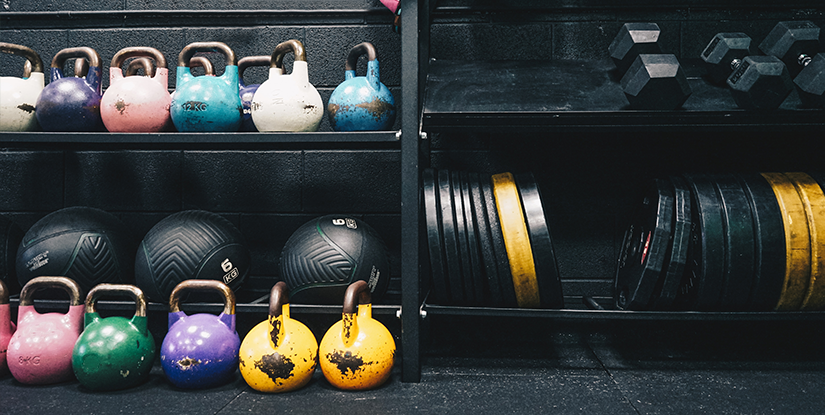Fitness Equipment List — Comprehensive Guide for Home and Commercial Gyms

Overview: Professional Guide to Fitness Equipment
Selecting appropriate fitness equipment is essential for safe, effective training. This guide categorizes equipment by purpose—cardio, strength, functional training and accessories—while offering practical selection, budgeting and maintenance advice for both home and commercial settings. The focus is on durable, versatile items that deliver measurable results.
Essential Equipment Categories
Understanding primary equipment categories helps align purchases with training goals, space constraints and user profiles.
Cardio Machines
Cardio machines improve cardiovascular fitness and assist weight management. Common options include treadmills for running/walking, stationary bikes (upright and recumbent), ellipticals and rowing machines. Choose based on impact tolerance, space and training variety.
Strength Training Machines and Systems
Resistance machines provide controlled movement patterns, ideal for beginners and rehabilitation. Multi-station selectorized units suit commercial spaces; plate-loaded machines and smith machines serve intermediate to advanced users seeking progressive overload.
Free Weights and Racks
Free weights—dumbbells, barbells, kettlebells and weight plates—offer unmatched versatility and functional strength gains. Complement with power racks, squat stands and adjustable benches to expand exercise options and safety features.
Functional and Performance Equipment
Functional training focuses on movement quality and sport-specific demands. Key items include suspension trainers, battle ropes, plyometric boxes, sleds and resistance bands. These tools enhance mobility, coordination and power.
Accessories and Recovery Tools
Accessories streamline workouts and protect equipment. Mats, collars, lifting straps, foam rollers and massage tools improve recovery and reduce injury risk. Storage solutions maintain facility organization and equipment longevity.
Sample Fitness Equipment List by Objective
Home Beginner Setup (Compact, Cost-Effective)
- Adjustable dumbbell set (pair)
- Adjustable bench
- Resistance bands kit
- Yoga/anti-slip exercise mat
- Stationary bike or compact treadmill
Home Intermediate Setup (Expanded Capability)
- Olympic barbell and plates
- Power rack with safety arms
- Full dumbbell set or adjustable alternatives
- Rowing machine for cardio and conditioning
- Foam roller and mobility tools
Commercial or Advanced Athlete Setup
- Multi-station selectorized system
- Free-weight area: racks, benches, full plate sets
- High-end treadmills, ellipticals and bikes
- Functional rig with pull-up stations and attachments
- Conditioning sleds, assault bikes and plyo boxes
How to Choose Equipment: Practical Criteria
Make decisions using objective criteria: intended use, available space, user capacity, durability and maintenance. Prioritize equipment with warranty coverage and reputable manufacturer support for commercial purchases. For home users, consider foldable or modular designs to optimize limited space.
Budgeting and Cost-Effectiveness
Allocate budget based on core objectives: invest first in items that provide the most training variety and longevity. For example, a solid barbell and rack deliver years of progressive strength training, whereas high-end cardio machines can be leased or prioritized later.
Maintenance, Safety and Lifespan
Routine maintenance extends equipment lifespan and ensures safety. Implement regular inspections, lubrication where required, bolt-tightening schedules and cleaning protocols. Train staff or household members on safe usage and proper spotter practices for heavy lifts.
Conclusion: Strategic Procurement for Results
Building an effective equipment roster requires balancing goals, space and budget while emphasizing durability and versatility. Whether equipping a home gym or a commercial facility, prioritize foundational pieces—free weights, a stable rack, and at least one cardio option—then expand into specialist and functional tools to support progression.
FAQs
- What equipment is essential for beginners? A pair of adjustable dumbbells, an adjustable bench, resistance bands and a mat.
- Should I buy machines or free weights first? Free weights and a rack usually offer greater long-term value for strength gains.
- How much space do I need for a home gym? A basic setup fits in 30–50 square feet; a full power rack requires 100+ sq ft.
- Are commercial machines worth the extra cost? Yes if subject to heavy use; they offer greater durability and service support.
- How often should I maintain equipment? Inspect weekly and perform deeper maintenance monthly or per manufacturer guidance.
- What budget is realistic for a functional home gym? Expect $1,000–$5,000 depending on quality and scope.
- Can resistance bands replace weights? Bands complement weights but are less effective for maximal strength gains alone.
- How do I ensure equipment safety? Use certified racks, quality plates, spotters and regular inspections.
- Where to buy reliable fitness equipment? Choose reputable brands, authorized dealers and read warranty terms.

